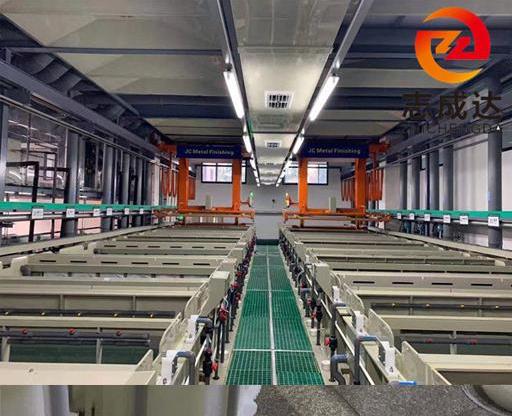In production, cyanide copper-tin alloy coatings sometimes blister or even fall off. Why does this happen? There are generally the following reasons.
(1) Unclear degreasing: The oil film that is not completely removed before electroplating isolates the metal from the plating solution. This affects the deposition of metal ions at the cathode, and in severe cases, even no metal can be plated. For parts with a thinner oil film, even if a good surface coating is applied, the bonding is actually not strong. Under certain conditions (increased stress caused by increased coating thickness; impact of high temperature and high current during chrome plating; strong impact of mechanical polishing and high temperature generated by friction, etc.), the coating will blister. In severe cases, it will fall off.
(2) The influence of replacement copper: Before electroplating, parts generally need to undergo electrolytic degreasing and acid etching. When the electrolytic degreasing solution and acid etching solution contain a certain amount of copper impurities, it is easy for steel parts to replace a layer of copper on the surface of the parts, and the bonding between this layer of copper and the base metal is not strong. When copper-tin alloy is electroplated on the replacement copper, as the thickness increases, the coating will generate certain stress. When the stress reaches a certain level, the coating will separate from the substrate together with the replacement layer, forming bubbles, or even falling off on a large scale.
(3) The influence of hydrogen evolution: In the electroplating process, hydrogen evolution is a very important factor causing the coating to bubble. This is because during the electrolytic degreasing and electroplating process, if there are cracks and micropores on the surface of the base metal, a certain amount of adsorbed hydrogen will accumulate. When electroplating copper-tin alloy, if the free sodium cyanide content in the plating solution is too high or the cathode current density is too high, a large amount of hydrogen will be precipitated on the cathode surface, and some hydrogen will also penetrate or be adsorbed in cracks and micropores on the surface of the base metal. After a layer of coating is plated on the surface of such hydrogen-permeated or hydrogen-absorbed parts, when the temperature of the covering coating and the surrounding area rises, a pressure is often generated on the coating due to expansion and overflow, causing the coating to separate from the substrate and bulge, forming bubbles.
In order to improve the quality of electroplating and prevent the occurrence of blistering of the coating, appropriate measures should generally be taken. When the plated parts are electrolytically degreased, the non-ferrous base metal should be degreased by cathode, increasing the current density and shortening the degreasing time; the steel base should be degreased by cathode first and then by anode, which can not only improve the degreasing effect but also reduce the occurrence of hydrogen permeation. On the other hand, if the free sodium cyanide content in the plating solution is too high and the cathode current density is too large, and a large amount of hydrogen is precipitated on the surface of the plated parts, in addition to blistering of the coating, it will also cause pinholes, pitting, airflow streaks and local non-coating defects in the coating. Therefore, it is necessary to pay attention to controlling the free sodium cyanide content not being too high and the cathode current density not being too large, so as not to reduce the current efficiency and avoid the adverse effects of a large amount of hydrogen precipitation on the coating.

